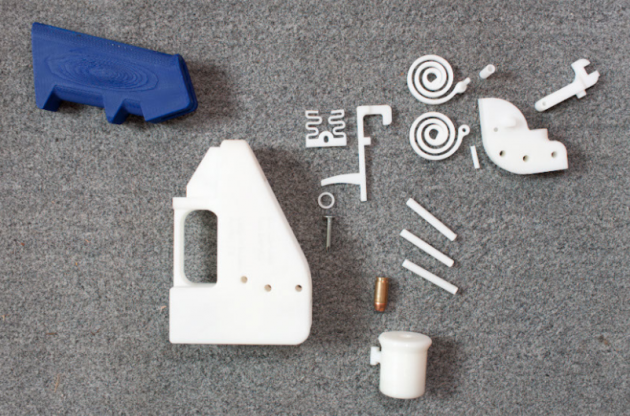A recent surge of interest in additive manufacturing — known colloquially as 3-D printing — has flustered the Pentagon and its industry partners, complicating efforts to develop the proper strategy and support structure to help bring this tool to bear on national security issues.
A piece published last year by two Army officers recently resurfaced to much fanfare. It has been picked up by industry cheerleaders, defense blogs, and thought leaders, all of whom optimistically describe the possibilities with little analytic depth. The data may be accurate, but the takeaways are misleading.
Three-D printing is primarily useful for two things the military and its industry partners do: rapidly building prototypes and producing specific parts for a system. That’s it, and neither of these are revolutionary.
There are already a lot of technologies out there that do both these things, so the Pentagon needs to make sure it isn’t trying to fix a problem for which it already has a solution. Sometimes a prototype is just paper and a pencil – it doesn’t need to be 3-D printed any more than it needs to be laminated or spray-painted.
Parts production can be very helpful, especially when you’re forward-deployed and can’t buy a replacement on Amazon and expect it the next day.
More thoughtful engineers with industry experience have weighed in on the matter and are significantly less optimistic about 3D printing’s “revolutionary” status. Echoing other problem-solvers around the defense community, this blogger states the simple yet profound truth: “[s]uccess for additive manufacturing (or any new technology for that matter) depends on meeting operational needs.”
This is the key to understanding 3-D printing: it’s a tool. Nothing more, nothing less. It is only useful to the degree it supports current and future missions.
3-D printing brings a host of new legal issues, as well, which the DoD would be smart to consider before any widespread adoption. Patents, copyrights, and other intellectual property rights are not yet well understood for 3-D printing or any other platforms involving digital design.
Questions around product liability would expose the DoD to significant risk in integrating 3-D printed parts into critical systems. For instance, if a much-needed part is printed for a jet, and that part – not tested to standard military specifications – fails, then who is to blame? The original manufacturer? The manufacturer of the 3-D printer? The person who installed it? What if this failure results in loss of life?
Take another commonly used example: unavailable medical parts onboard Navy ships. What sort of equipment qualification process needs to be in place? Is the FDA involved? How? What level of medical training is required for diagnosis? How would the engineers be trained to deal with medical issues?
This is not to dispute that 3-D printing has a substantial future in the defense world. It does, and it should. But that future must come through a deliberate strategy that assesses 3-D printing based on its mission-relevant capabilities, not abstract “revolutionary” technological ideals.
Such a strategy would collaborate with industry to develop military testing and standards, advance materials science, craft smart regulations, and consistently fund what works.
3-D printing did not spark a revolution; the introduction of these technologies instead fostered an evolution of military tactics and capabilities. Industry and policy will rightly drive the bulk of technological development and commercialization. The DoD needs to have a voice, however, clearly spelling out 3D printing’s value and applications for national security.
William Treseder is head of technology assessment at BMNT Partners, a Silicon Valley technology advisory firm. He served in the Marines from 2001 to 2011, and writes about national security technology and policy.
Jessica Knight is pursuing a master’s degree in International Policy Studies at Stanford University, focused on international security.
Sullivan: Defense industry ‘still underestimating’ global need for munitions
National Security Advisor Jake Sullivan said that there are “no plans” for another Ukraine supplemental at this point.




























